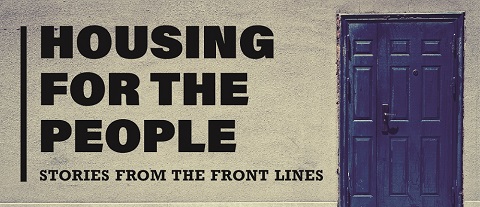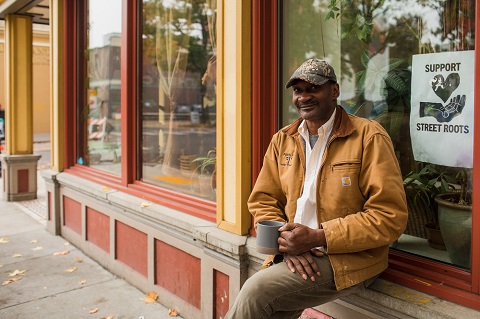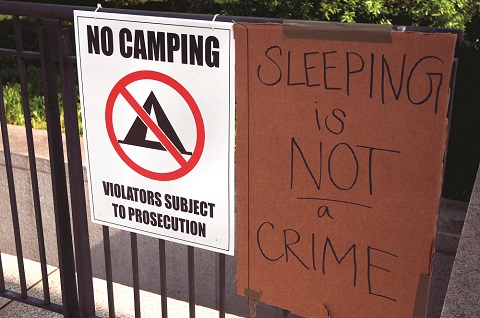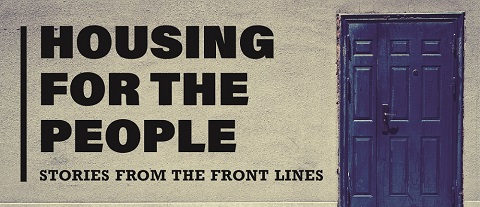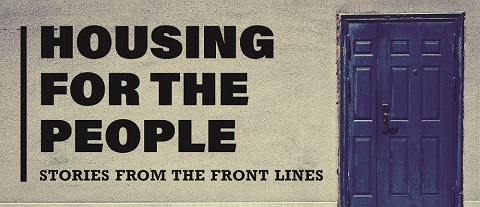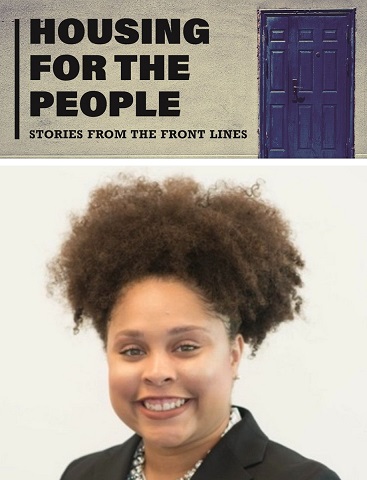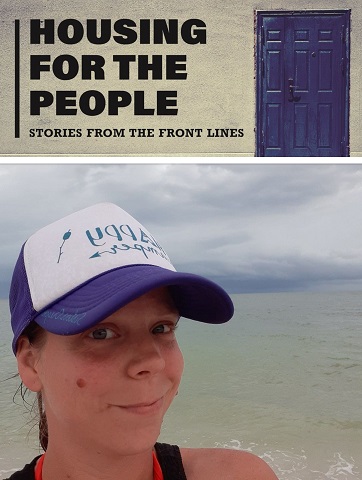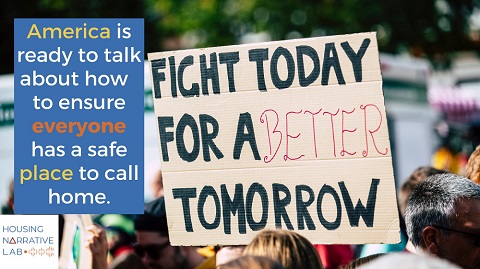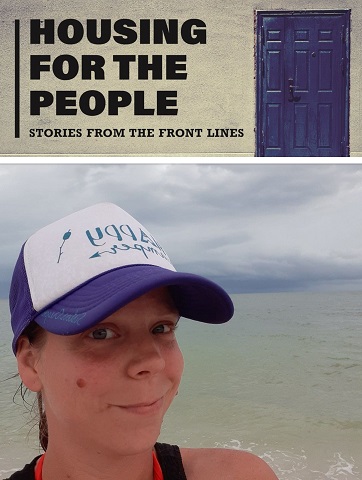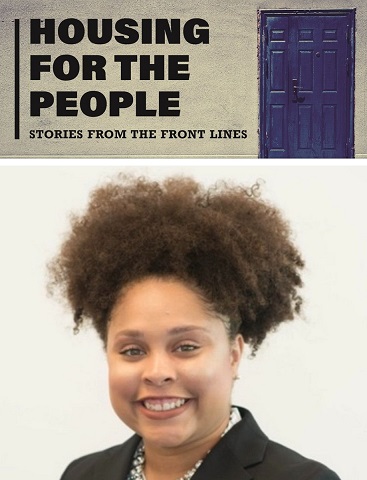By Poul Struve Nielsen, Hus Forbi editor
“Hus Forbi is the story that tells us you can do it, that you can accomplish something,” said Poul Nyrup Rasmussen, Denmark’s former Social Democratic Prime Minister. He was speaking at the Workers Museum in Copenhagen earlier this year as he opened a special Hus Forbi exhibition, marking the 20th anniversary of the street paper.
After a successful run in Copenhagen, the exhibition will now go on permanent display in the Forsorgsmuseet / Welfare Museum in the town of Svendborg. The exhibit gives an insight into everyday life for a Hus Forbi vendor. It also asks: what is homelessness? And: what is life like for a socially marginalised person? Visitors will walk away having learned about Hus Forbi’s history and why the street paper has meant different things to a wide range of people.

The Welfare Museum is currently being redeveloped. As part of the regeneration, its curators aim to develop the former poorhouse to reflect life in a modern Denmark. When the building closed its doors as a poorhouse in 1974, its residents were relocated to the St. Dannesbo accommodation facility ran by social services 40km north of Svendborg.
Coincidentally, the facility is where Hus Forbi vendor and homeless journalist Jensine currently lives. She recently paid a visit to the Welfare Museum to record her experience, at the invitation of museum director Sarah Smed.
Touring the Welfare Museum
By Jensine Jensen, Hus Forbi vendor
The high walls and barbed wire of the building remain intact. Inside, the poorhouse – which operated for 102 years before its closure – is separated in two. The poorhouse director would decide where people were going to live. On one side lived those ‘worthy of need,’ judged as being ‘not guilty’ of their inability to provide for themselves. Next door were the ‘unworthy of need,’ viewed as lazy, rundown and unable to provide for themselves and society.
The latest issues of Hus Forbi sit on the rack on the museum café alongside other magazines that focus on issues around homelessness. At the start of the tour, I ask Sarah, “It looks like a prison. What does this have to do with Hus Forbi?” Sarah nods, “Yes, what does Hus Forbi have to do with a prison? We show the way the system deals with people. We need Hus Forbi to come here and for the vendors to tell their stories.”
100 years difference
When the poorhouse closed, local residents were ashamed of the building. Forty years ago, people thought of the place as an embarrassing and sad part of Danish history. When it opened in 1872, the general view was that it was a socially charitable idea and that good was being done by creating a home for the poor.
For residents, food and medical care was provided. People survived starvation and disease by coming through the poorhouse doors. And there were duties. Every person healthy enough would have tasks to do.
While lives were saved, basic rights were taken away. For women who fell pregnant while living in the poorhouse, many had their babies taken from them. No rights of ownership existed, nor could residents get married, vote or put themselves forward for elections says Sarah.
Mandatory bath
We walk through the gateway into a part of the building that isn’t fenced with barbed wire. It was here the ‘worthy of need’ lived, and where mandatory baths were taken in a big room with bare walls and one bathtub.
Old clothes came off new residents as they entered the poorhouse. Without choice, a new set of clothes were handed out with. ‘SF’ for Svendborg Fattiggård (Svendborg poorhouse) printed on them. Everyone wore the same.
This seems to touch everyone who visits. It is difficult to imagine, when you yourself have been homeless, especially when the children were removed. It looks like a place of torture. It’s terrible. It is nice to get a bath. But the thing about the clothes I can’t accept. When I put on the Hus Forbi uniform I think that now I have to earn 20 kroner and get some food or something. I’m always happy about my Hus Forbi uniform.

A good meal
We leave the bathroom. Further down the hallway, one of the volunteers of the Welfare Museum has prepared vegetable soup. There is also a menu on the wall, describing the food from back then.
It is good to get some food with some calories in it, when you are homeless. Sometimes I only eat once a day. I prefer something that is nutritious. Not pasta, but potatoes, vegetables and meat.
“A good meal really meant a lot. You got that here. It could be the same dish every 20 days in a row, though,” Sarah explains. “There was also a ban on drinking alcohol.”
Sarah walks down the hallway and opens a grandfather clock, which stands in the same place as it did for much of the 20th century. In the bottom of the clock, the former residents used to hide booze. It was never like any of the bottles found today in supermarket shelves – more like those found between the cleaning materials.
Escape and exit
Now the tour proceeds to one of the less comfortable areas of the welfare museum, the isolation rooms.
“Residents could seek permission to go out once a week. One thing is they didn’t decide for themselves, how long they would remain in the poorhouse”, says Sarah. “A woman, called Alma, was here for 45 years.
“A man named Herman fled all the time. He was here over a period of 63 years. Occasionally, he was also at Sundholm, and in jails. He was in trouble his whole life. He had a desire for freedom that couldn’t be suppressed. He fled from everywhere. And he kept doing it. He fled the wall here at the age of 89 years.”
We cannot talk to Herman, as he died a long time ago. I am sometimes away from the reception centre two to three days a week. It is hard for me to be at St. Dannesbo. There is a little bed in a little room. I am almost strangled by it. When I wake up in the morning to take a bath, in my brain I´m thinking: You are staying home today. But I can feel in my body that I have to get out. Here it must have been worse. Here the door was locked.
It was 50/50 as to how many people came voluntarily and how many had no other choice than to live here. If you arrived with gangrene in your leg, or in a complete delirium, it would not have been strange to have come voluntarily. However, when you then felt better after a week or so, you could not just leave.
Isolation
In the next room, I can feel that this is an isolation cell. It’s suffocating and exhausting.
“May I show you the back side of the door,” Sarah says. “Look at these marks.”
They would not have been able to get anything inside here. They used something which was here already – the sharp edge of a chamber pot. It fits right into the marks. They hit the door with the pot. I hope it was empty!
Sarah continues: “Notice the peephole in the door – I have always called it that. But I had a visit from the Prison and Probation Service here and they told me that’s it is called ‘the Judas hole’.” But who was Judas? Those inside here or those outside?

The employees here did not have any education in teaching. In addition, when people came in drunk and wanted to hurt themselves or others, I imagine that it must have anguished them, with no alternative other than to lock people up here.”
Among the visitors at the museum are people from homeless reception centres and students. Children from institutions and remedial classes also visit, with many of them having been diagnosed with ADHD. When they stand by the back side of the door, I ask them, “Have any of you tried to break something in helplessness?” They realise that other people have felt the same.
Without the coercion, this could have been a nice place. If there had been Hus Forbi 100 years ago, it might not have been like this.
Unworthy
We walk through the gate into another building where there is barbed wire around the yard. “Here is where the unworthy of need lived,” says Sarah. “There are bars on the windows.”
As we walk into an office, she asks me to sit on a particular chair, which she describes as “the centre of power.” She explains it is the chair the poorhouse director used to sit in. He decided, how long people had to be here, and also, who got to keep their children. Now I am sitting here as the poorhouse director who has to make the decisions.
Sarah shows me a report about one of the residents written by an inspector. He wrote: “Katrine Klærup, 19 years old. Unworthy of need, registered at the poorhouse nine months ago. Under the circumstances has no ability to provide.” I discover she came into the poorhouse as a 13-year-old.
From the records, I can see everything was operated in fixed order and carefully planned. The ‘lazy’ had to get up earlier than the worthy of need. When I think about all of this, I feel like I live in luxury homelessness compared to the people who used to live here. Their conditions were so terrible. I can move around freely and I can earn money by selling Hus Forbi.
Translated from Danish by Lærke Durkee





